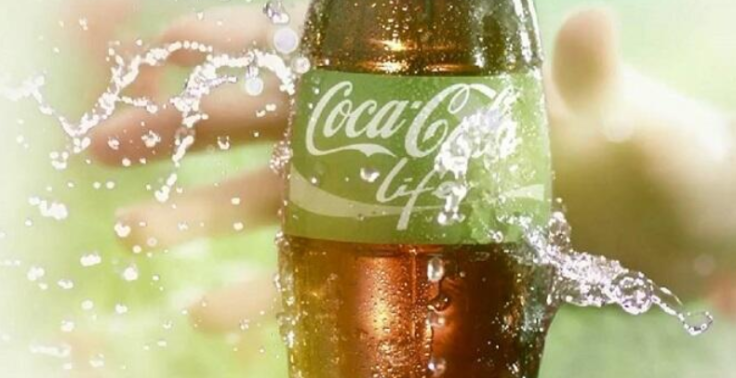Stevia-Sweetened 'Coke Life' Is A Low-Sugar Alternative To Regular Coke, But Is It Really Healthier?

Coca-Cola is at it again. Joining Coke’s classic red can, Diet Coke, and Coke Zero is the company’s newest “healthier” addition: Coca-Cola Life, also known as Coke Life. The small green can, which is a Stevia-sweetened version of regular Coca-Cola, is the first addition to the Coke brand in almost eight years.
“With Coca-Cola Life, we have innovated to provide consumers with a new option with fewer calories,” said James Quincey, Coca-Cola Europe president, in a press release. “It complements our existing brands and is well-positioned to meet changing lifestyle trends, providing people with a great-tasting, lower calorie cola sweetened from natural sources.” Coca-Coca Life is one of the latest initiatives from Coke to address the obesity rates around the world as it promotes “active lifestyles” in its recyclable packaging and green label.
It’s no coincidence the company’s development of this product is a response to the continually steady decline of soda sales in the U.S. in the last nine years. Last year alone, soda sales have dropped three percent, or more than double the 1.2 percent they had fallen the year before, according to Beverage Digest. Now, soda is already down a further two percent this year. However, diet soda sales, although dropping to about seven percent last year, have remained relatively steady.
Coca-Cola has used the artificial sweetener, aspartame, in their diet beverages. An eight fluid ounce Diet Coke contains 60 milligrams (mg) of phenylalanine, 48mg of aspartic acid, and 123mg of methanol – the amino acids the artificial sweetener is comprised of. Although aspartame has been approved by the U.S. Food and Drug Administration at an “acceptable” daily intake of 50mg/kg body weight for adults and children, the ingredient can kill certain neurons by allowing the influx of too much calcium into the cells.
The beverage company has touted how “healthy” their new drink is, with natural ingredients like Stevia. Stevia is a plant-based product, made from a plant native to Paraguay that is calorie-free and can be up to 200 times sweeter than regular sugar. But Coke Life still contains more than four teaspoons of sugar per 330ml can, which is the equivalent to 25 percent of an adult's daily recommended maximum intake, according to the American Heart Association, compared to 39 percent from a regular 330ml can of Coca-Cola.
The color and design of the new coke bottle is also part of the company’s attempt to convince consumers their product is “healthier,” despite its copious amounts of sugar. Its vegetable green color, and plant decorations are mimicking those of health drinks that encourage “healthy living.” Although Coke Life may be a healthier alternative in comparison to regular coke, it contains a lot of sugar. “Whatever the company says, this is a product with a high sugar content and it will encourage people to have a sweet tooth,” said Dr. Aseem Malhotra, scientific director of the UK-based association Action on Sugar, told The Guardian.
As Coca-Cola tries to masquerade the unhealthy ingredients with its product release, PepsiCo has decided to take a different route from its rival company. PepsiCo is working with Senomyx, a San Diego-based biotech company, to create an additive that would fool people’s taste buds into tasting more sugar than what is actually in the product, according to Bloomberg News. The soda industry is desperately trying to find ways to stay alive amid health advocates pushing for stronger warning labels, and even bans on the drinks throughout the U.S.
Coca-Cola’s Coke Life, first piloted in Argentina and Chile, with enticing commercials that compare drinking the coke to having your first kiss, is expected to hit shelves in the U.K. in the fall. There is no word yet when this sugar-laden product will make its North American debut. We have to wait and see whether this product can give the company the boost it needs. Until then, the healthiest option of all is to not drink soda.
Published by Medicaldaily.com



























